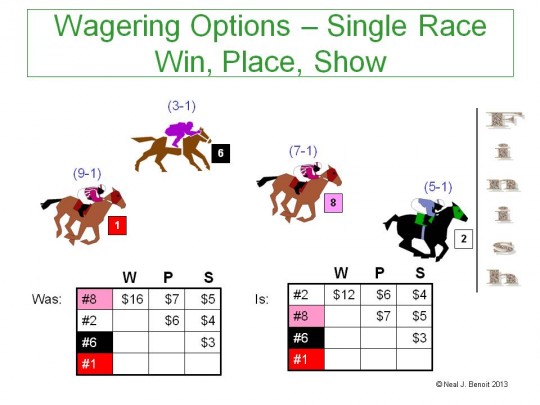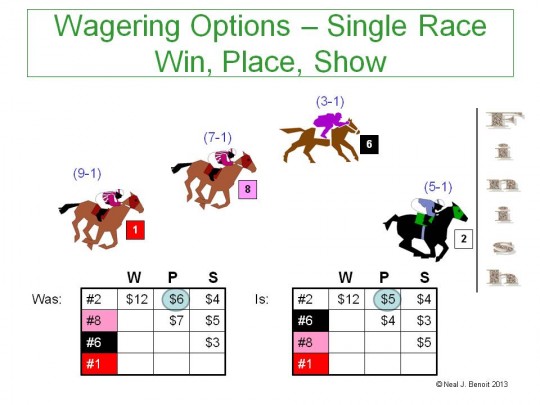Win, Place, Show – How To Bet On Horses (Part 2)
Continuing with the example from the prior post: Win, Place, Show (Part 1), let’s change the order of finish slightly by switching the top two horses #8 and #2.
The former payouts are shown on the left for comparison, and the new payouts are shown on the right.
Since #2 is now the winner, his payout line is switched to the top of the chart. He pays $12 for a win ticket because his odds are 5-1. Formula (5 x $2) + $2.
Notice that the #8 place price stayed exactly the same ($7), as did the #2 place price ($6). That is because the same two horses finished in the top two positions, just in reverse order.
Now let’s change the order of finish again by pushing the #8 horse back to 3rd place and moving the #6 horse up to 2nd place.
Since #2 remains the winner, his Win price ($12) does not change. However, notice that his place price decreased from $6 to $5. Why? Because more total money was bet on #6 (the new 2nd place horse) to place than on #8 (the former 2nd place horse). This is reasonable, considering that the Win odds on #6 are 3-1, while the Win odds on #8 are 7-1.
Generally the amount of money bet on a horse is proportionate between the Win, Place, and Show pools. The simple reason why the payout is less for Place and Show wagers (compared to Win) is that the payout pool is being divided by two horses for Place and three horses for Show.
You can conclude from this information that your best return from a Place or Show wager generally happens when the favorite(s) does not finish “In The Money” (The Top Three Spots). Unless of course you bet on the favorite, which is another story!
There are a lot of opinions on whether or not it’s even wise to make Place and Show bets, as opposed to just Win bets, but we’ll save that topic for a future post.



2 comments on “Win, Place, Show – How To Bet On Horses (Part 2)”